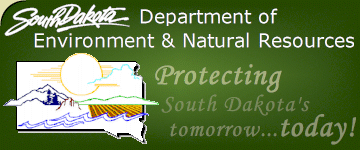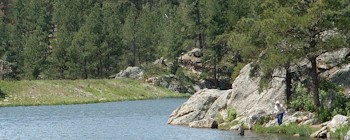| Mission of the Geological Survey Program |
The mission of the Geological Survey Program is to perform scientific investigations that are designed to generate information on South Dakota’s geologic and hydrologic resources. Fundamental aspects of those investigations are to include the collection, interpretation, and dissemination of geologic and hydrologic information leading to (1) a better understanding of the geology and hydrology of South Dakota, (2) better and easier use of the information by government, industry, and the public for decisions related to resource development and protection, (3) greater economic development, and (4) a better quality of life for South Dakota’s citizens.
|
History
 The South Dakota Geological Survey was established by the legislature on March 6, 1893. From 1893 to 1903, the first State Geologist, J.E. Todd, led a pioneering effort to establish the Survey as a State scientific institution, through various reconnaissance surveys of the State.
The South Dakota Geological Survey was established by the legislature on March 6, 1893. From 1893 to 1903, the first State Geologist, J.E. Todd, led a pioneering effort to establish the Survey as a State scientific institution, through various reconnaissance surveys of the State.
 From 1903 to 1914, under State Geologist, Ellwood C. Perisho, the Survey continued with reconnaissance work and expanded its role in Natural Science education, with geology being one of several fields addressed.
From 1903 to 1914, under State Geologist, Ellwood C. Perisho, the Survey continued with reconnaissance work and expanded its role in Natural Science education, with geology being one of several fields addressed.
 From 1915 to 1926, the method of work changed from reconnaissance surveys to more detailed investigations under State Geologist, Freeman Ward.
From 1915 to 1926, the method of work changed from reconnaissance surveys to more detailed investigations under State Geologist, Freeman Ward.
 From 1926 to 1957, the Survey was under the guidance of State Geologist, E.P. Rothrock. The Great Depression shifted the Survey's priorities to concentrate on mineral resources, which would benefit the State. After the depression years, the Survey began to broaden the types of geologic investigations that it undertook.
From 1926 to 1957, the Survey was under the guidance of State Geologist, E.P. Rothrock. The Great Depression shifted the Survey's priorities to concentrate on mineral resources, which would benefit the State. After the depression years, the Survey began to broaden the types of geologic investigations that it undertook.


 From 1957 to 1992, the Survey continued to expand its investigations across the State. State Geologists Allen F. Agnew, Duncan J. McGregor, and Merlin J. Tipton, significantly increased the number and types of cooperative investigations.
From 1957 to 1992, the Survey continued to expand its investigations across the State. State Geologists Allen F. Agnew, Duncan J. McGregor, and Merlin J. Tipton, significantly increased the number and types of cooperative investigations.

 From 1992 to the present, State Geologists Cleo M. Christensen and Derric L. Iles have concentrated efforts to complete the countywide assessments of geologic and hydrologic resources in the eastern half of the State. With the completion of these countywide studies nearing, an increased focus on the protection of the State's natural resources has evolved. The Survey has begun long term efforts to monitor the water quality of the State's shallow aquifers as well as produce more detailed mapping of the shallow aquifers in the State.
From 1992 to the present, State Geologists Cleo M. Christensen and Derric L. Iles have concentrated efforts to complete the countywide assessments of geologic and hydrologic resources in the eastern half of the State. With the completion of these countywide studies nearing, an increased focus on the protection of the State's natural resources has evolved. The Survey has begun long term efforts to monitor the water quality of the State's shallow aquifers as well as produce more detailed mapping of the shallow aquifers in the State.




